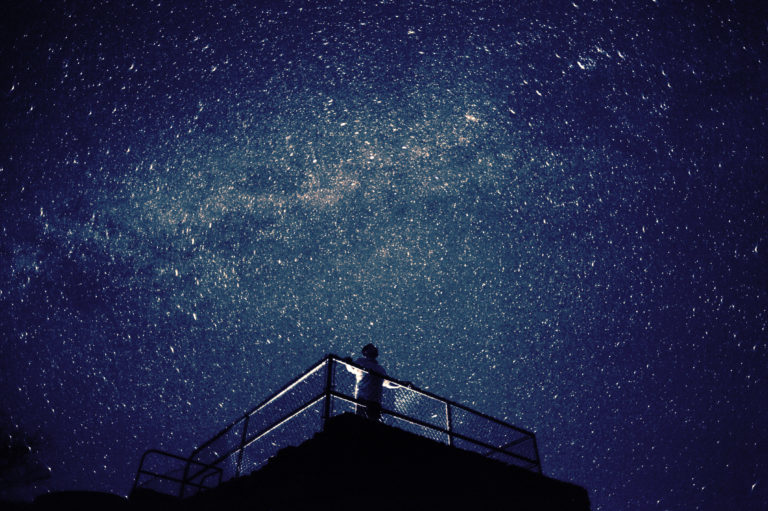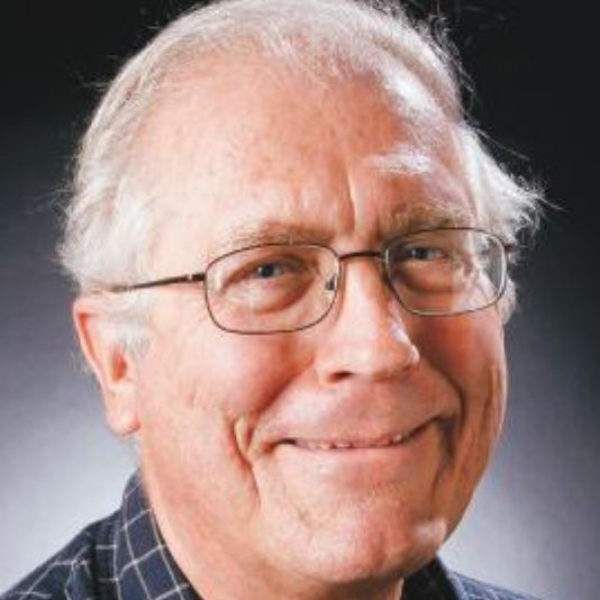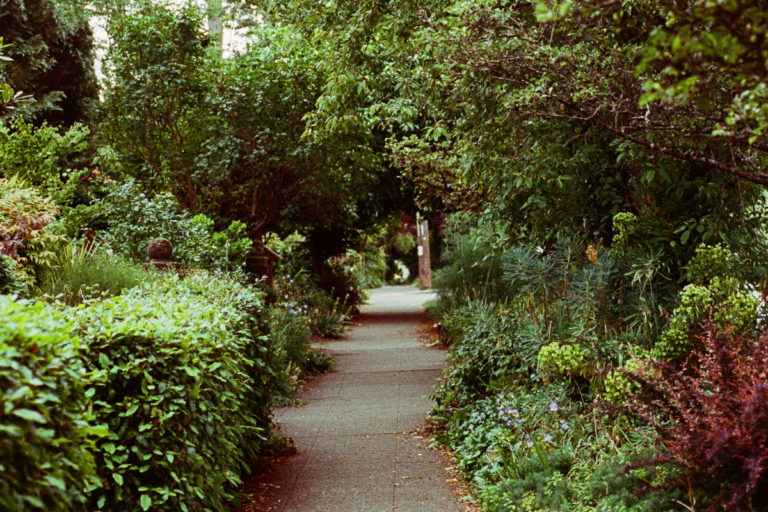
Stars at Waimea Canyon Lookout Image by Bo Hakala/Flickr (CC BY-NC-SA 2.0)..
A Faith of Lived Experience and Inwardness: Bieke Vandekerckhove’s “The Taste of Silence”
On Monday this week a spiritual giant died — Bieke Vandekerckhove. You’ve probably never heard of her. I hope I can persuade you to make her acquaintance.
Her book, The Taste of Silence: How I Came to Be at Home with Myself, was published in English just last month. It hit me with the force of revelation — the best sort, confirming what I already knew, but didn’t know I knew.
I had already seen the world in many colors. Bieke Vandekerckhove makes the spiritual spectrum visible and palpable all the way into the infrared and ultraviolet. In her presence the wall between “spiritual” and “religious” crumbles.
At the age of 19, Bieke Vandekerckhove, a Belgian, was diagnosed with amyotrophic lateral sclerosis (ALS), commonly known as Lou Gehrig’s disease. Doctors gave her two to five years to live. The condition went into remission, and she lived another 27 years, hampered by disabilities, requiring help from many, including her husband. During that entire time, the distinct likelihood of relapse and death was ever present.
There is not a shred of sentimentality in The Taste of Silence, no wallowing in self-pity. When her world came undone with her ALS diagnosis, Bieke Vandekerckhove quickly discovered that the Christianity she had inherited was inadequate, actually worse than useless.
She didn’t leave it at that. Responding to some sort of inexplicable hunch — “it went totally against my routine and against everything that until then had been familiar to me” — she decided to spend time, a year, initially, in a Benedictine monastery. Not exactly a rebuke of institutional religion!
And here is the surprise she found:
“I came upon the treasures of Christianity through a strange door. A little back door, actually. Half decayed, hidden under a thick layer of dust, barely known and noticed. But on the inside, jumping with life. You see, I got to know the Christian faith through its contemplative form, through abbeys. This is no faith of rules and merits. Neither is it a faith of dogmas that must be accepted as truths. Here I discovered a faith of lived experience and inwardness, preserved throughout the centuries and passed on.”
“Preserved throughout the centuries,” and that preservation required an institution. Of course institutional religion can stifle spirituality, but it can also nourish and sustain it.
Bieke Vandekerckhove’s story shows, over and over again, the way spirituality and religion get synchronized in the paradox classically stated by Polonius in Hamlet: “by indirections find directions out.”
She initially “came upon the treasures” “through a little back door.” Then she came upon them again from what she’d not have dreamed was a door to them at all: Zen Buddhism.
One of her Zen teachers pointed to Moses as an instance of the ideal of the bodhisattva, who, out of compassion, pulls back from stepping over into Nirvana in order to bring along those farther back. Moses asks God to blot him out of the book of life if the Israelite people are going to be destroyed because of their unfaithfulness. “My first contact with Zen,” Bieke Vandekerckhove says, “led me right away to the core of the religion in which, as a Westerner, I had been brought up.”
The Benedictine sisters, the Zen practitioners, and her illness. Yes, her illness too: Bieke Vandekerckhove credits her confrontation with her mortality, her disabilities, her anguish, for fusing religion and spirituality.
She quickly forestalls any easy notion that God made her sick in order to bless her. She quotes Kierkegaard, “It is as if language splits apart and breaks at the joints.” Then she goes on to say that if you don’t grasp this “you arrive at gruesome notions. The illness, or losing a child, etc., could be ‘a mercy,’ ‘a blessing,’ or whatever. Nonsense! Please let’s not force it into the straitjacket of intellectual thought.”
The sister who was her spiritual guide at the monastery asked Bieke Vandekerckhove, every time they talked, “What do you long for?” Bieke Vandekerckhove was initially baffled, “As if you have something left to desire when everything is being taken from you!” Eventually she discovered that “it is longing, period. It is incomplete. It is open, to everything and everybody… Sometimes it’s there, mostly not. Then there’s nothing to do but wait and wrestle.”
What comes after the waiting and wrestling?
“Pushing through all possible ideas about reality to reality itself. And that reality is infinitely more beautiful, intense, grand, whimsical, and mysterious than the mental images within which we mostly live it and experience it.”
The clincher: following her diagnosis, she writes:
“When I saw everything as it were for the last time, it appeared as if I saw everything for the first time.”
“Beautiful, intense, grand, whimsical, mysterious” — these (especially “whimsical”) are qualities of spirituality as I know it too. But also of religion as I know it, and as Bieke Vandekerckhove knew it. She knew as well, and so do I, that life and spirituality and religion can be dark, cruel. “Not everything is love.” “Sometimes it’s there, mostly not.” There are both “potentiality and difficulty.”
We are fortunate to have Bieke Vandekerckhove as a companion on life’s way. With her insight, her honesty, and her literary skill, she has crafted pages that are, like what she found on the inside of monasteries, “jumping with life.” She is no longer with us. Through her book, she is right here.

